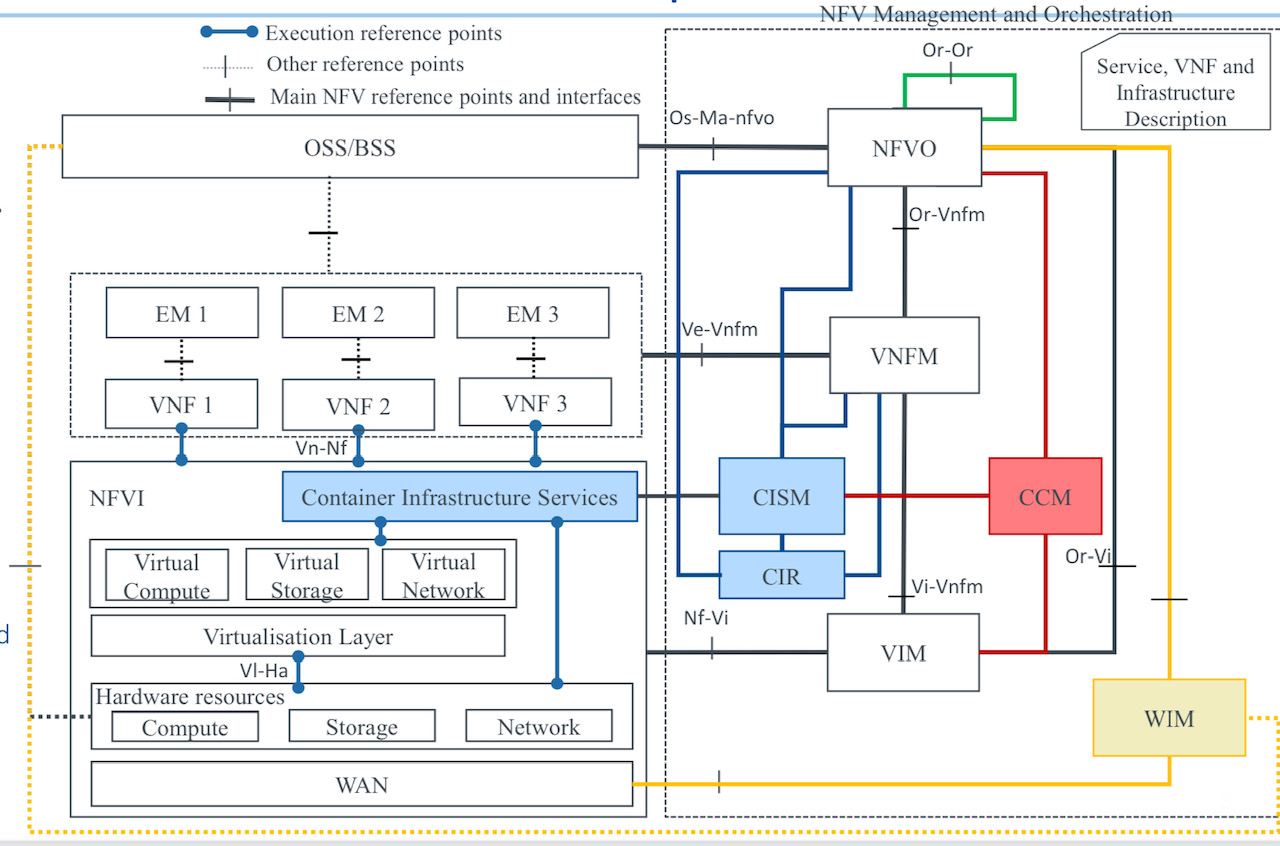Orchestration, service assurance, service fulfilment, automation and closed-loop automation. These are important concepts associated with network functions virtualisation (NFV) technology being adopted by telecom operators as they transition their networks to become software-driven and cloud-based.
Prayson Pate (pictured), CTO of the Ensemble division at ADVA Optical Networking, explains the technologies and their role and gives each a status update.
Orchestration
Network functions virtualisation (NFV) is based on the idea of replacing physical appliances - telecom boxes - with software running on servers performing the same networking role.
 Using NFV speeds up service development and deployment while reducing equipment and operational costs.
Using NFV speeds up service development and deployment while reducing equipment and operational costs.
It also allows operators to work with multiple vendors rather than be dependent on a single vendor providing the platform and associated custom software.
Operators want to adopt software-based virtual network functions (VNFs) running on standard servers, storage and networking, referred to as NFV infrastructure (NFVI).
In such an NFV world, the term orchestration refers to the control and management of virtualised services, composed of virtual network functions and executed on the NFV infrastructure.
The use of virtualised services has created the need for a new orchestration layer that sits between the existing operations support system-billing support system (OSS-BSS) and the NFV infrastructure (see diagram below). This orchestration layer performs the following tasks:
- Manages the catalogue of virtual network functions developed by vendors and by the open-source communities.
- Translates incoming service requests to create the virtualised implementation using the underlying infrastructure.
- Links the virtual network functions as required to create a service, referred to as a service chain. This service chain may be on one server or it may be distributed across the network.
- Performs the various management tasks for the virtual network functions: setting them up, scaling them up and down, updating and upgrading them, and terminating them - the ‘lifecycle management’ of virtual network functions. The orchestrator also ensures their resiliency.
The ETSI standards body, the NFV Industry Specification Group (ETSI NFV ISG), leads the industry effort to define the architecture for NFV, including orchestration.
Several companies are providing proprietary and pre-standard NFV orchestration solutions, including ADVA Optical Networking, Amdocs, Ciena, Ericsson, IBM, Netcracker and others. In addition, there are open source initiatives such as the Linux Foundation Networking Fund’s Open Network Automation Platform (ONAP), ETSI NFV ISG’s Open Source MANO (OSM) and OpenStack’s Tacker initiative.
 Source: ETSI GS NFV 002
Source: ETSI GS NFV 002
Service assurance
Service providers promise that their service will meet a certain level of performance defined in the service level agreement (SLA).
Service assurance refers to the measurement of parameters such as packet loss and latency associated with a service; parameters which are compared against the SLA. Service assurance also remedies any SLA shortfalls. More sophisticated parameters can also be measured such as privacy and responses to distributed denial-of-service (DDOS) attacks.
NFV enables telcos to create and launch services more quickly and economically. But an end customer only cares about the service, not the underlying technology. Customers will not stand for a less reliable service or a service with inferior performance just because it is implemented as a virtual function on a server.
Service assurance is not a new concept, but the nature of a virtualised implementation means a new approach is required. No longer is there a one-to-one association between services and network elements, so the linkages between services, the building-block virtual network functions, and the underlying virtual infrastructure need to be understood. Just as the services are virtualised, so the service assurance process needs virtualised components such as virtual probes and test heads.
The telcos’ operations groups are concerned about how to deploy and support virtualised services. Innovations in service assurance will make their job easier and enable them to do what they could not do before.
EXFO, Ixia, Spirent, and Viavi supply virtual probes and test heads. These may be used for initial service verification, ongoing monitoring, and active troubleshooting. Active troubleshooting is a powerful concept as it enables an operator to diagnose issues without dispatching a technician and equipment.
Service fulfilment
Service fulfilment refers to the configuration and delivery of a service to a customer at one or more locations.
Service fulfilment is essential for an operator because it is how orders are turned into revenue. The more quickly and accurately a service is fulfilled, the sooner the operator gets paid. Prompt fulfilment also leads to greater customer satisfaction and reduced churn.
Early-adopter operators see NFV as a way to improve service fulfilment. Verizon is using its NFV-based service offering to speed up service fulfilment. When a customer orders a service, Verizon instructs the manufacturer to ship a server to the customer. Once connected and powered at the customer’s site, the server calls home and is configured. Combined with optional LTE, a customer can get a service on demand without waiting for a technician. This significantly improves the traditional model where a customer may wait weeks before being able to use the telco’s service.
Network automation
Network automation uses machines instead of trained staff to operate the network. For NFV, the automated software tasks include configuration, operation and monitoring of network elements.
The benefits of network automation include speed and accuracy of service fulfilment - humans can err - along with reduced operational costs.
Telcos have been using network automation for high-volume services and to manage complexity. That said, many operators include manual steps in their process. Such a hands-on approach doesn’t work with cloud technologies such as NFV. Cloud customers can acquire, deploy and operate services without any manual interaction from the webscale players. Likewise, NFV must be automated if telecom operators are to benefit from its potential.
Network automation is closely tied to orchestration. Commercial suppliers and open-source groups are working to ensure that service orders flow automatically from high-level systems down to implementation, dubbed flow-through provisioning and that ‘zero-touch’ provisioning that removes all manual steps becomes a reality. But for this to happen, open and standard interfaces are needed.
Closed-loop automation
Closed-loop automation adds a feedback loop to network automation. The feedback enables the automation to take into account changing network conditions such as loading and network failures, as well as dynamic service demands such as bandwidth changes or services wanted by users.
Closed-loop automation compares the network’s state against rules and policies, replacing what were previously staff decisions. These systems are sometimes referred to as intent-based, as they focus on the desired intent or result rather than on the inputs to the network controls.
Service providers are also investigating adding artificial intelligence and machine learning to closed loop automation. Artificial intelligence and machine learning can replace the hard-coded rules with adaptive and dynamic pattern recognition, allowing anomalies to be detected, adapted to, and even predicted.
Closed-loop automation offloads operational teams not only from manual control but also from manual management processes. Human decisions and planning are replaced by policy-driven control, while human reasoning is replaced by artificial intelligence and machine learning algorithms.
Policy systems or ‘engines’ have existed for a while for functions such as network and file access, but these engines were not closed-loop; there was no feedback. These policy concepts have now been updated to include desired network state, such that a feedback loop is needed to compare the current status with the desired one.
A closed-loop automation system makes dynamic changes to ensure a targeted operational state is reached even when network or service conditions change. This approach enables service providers to match capacity with demand, solve traffic management and network quality issues, and manage 5G and Internet of Things upgrades.
Closed loop automation is complex. Employing artificial intelligence and machine learning will require interfaces to be defined that allow network data into the intelligent systems and enable the outputs to be used.
Several suppliers have announced products supporting closed-loop automation or intent-based networking, including Apstra, Cisco Systems, Forward Networks, Juniper Networks, Nokia, and Veriflow Systems. In addition, the open source ONAP project is also pursuing work in this area.